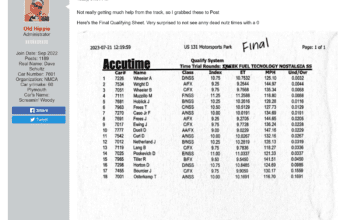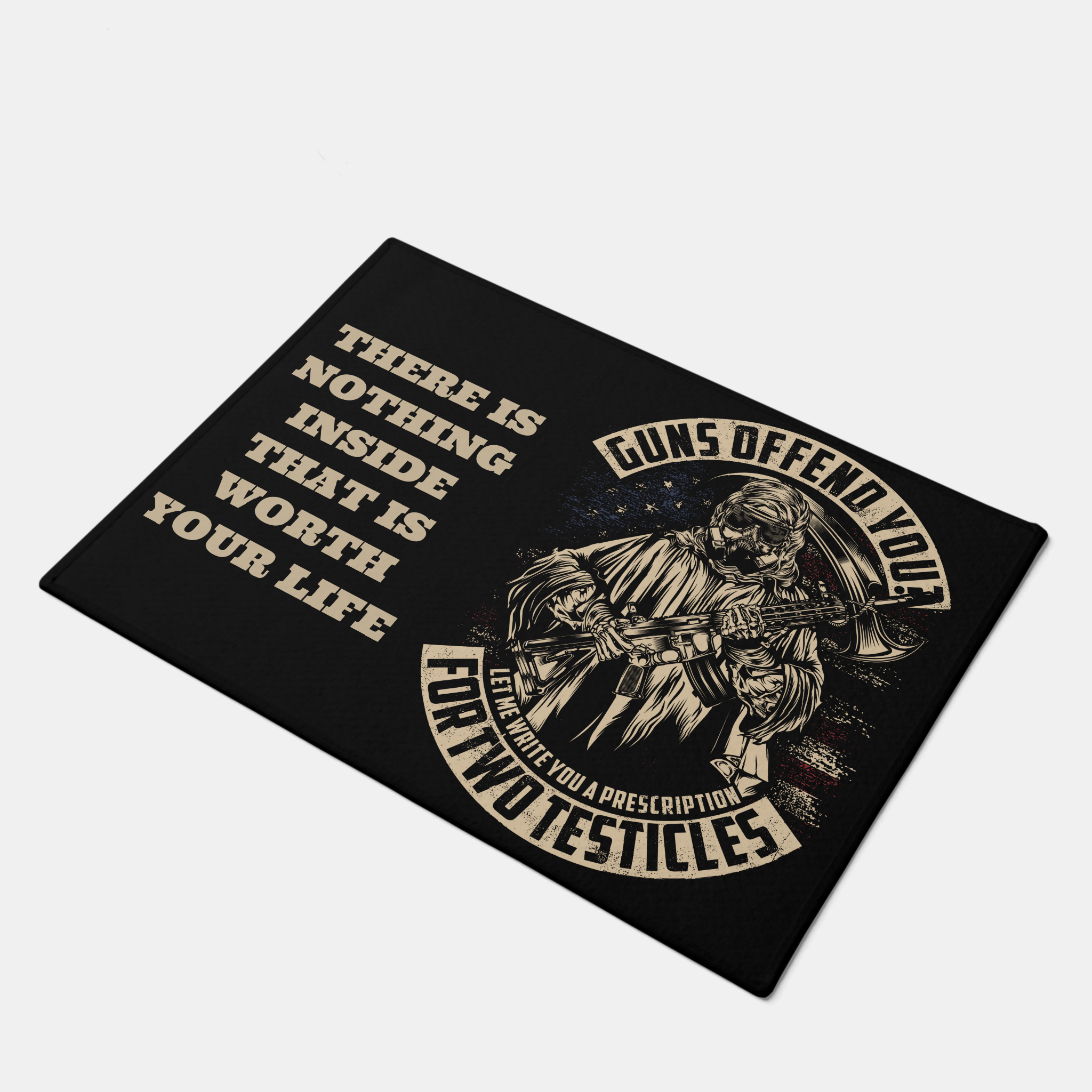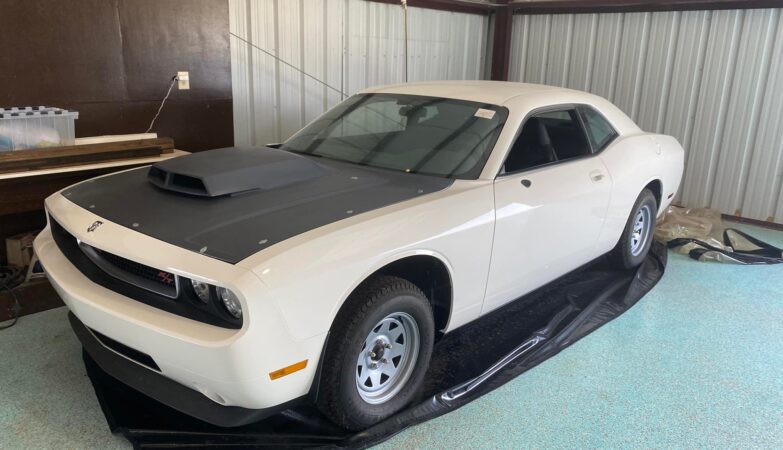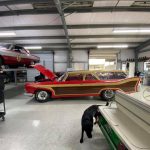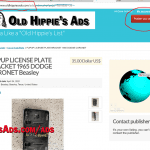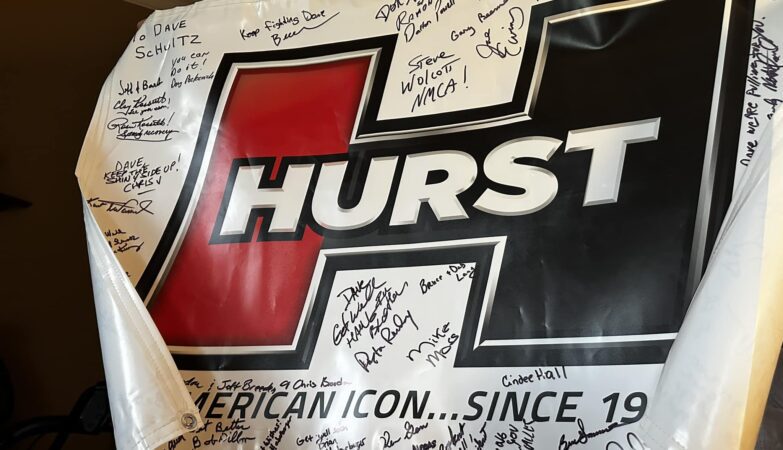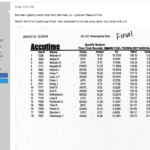Drag Racing 101
Dave Schultz
April 20, 2011
Have you ever hammered your car on the highway, or race someone up to the next stop light? Did you get just a little rush? Well that wasn't a safe or legal way to get a rush — and it really wasn't anything measurable. Why not take it to the next level by bringing your car to the local track instead?
Every track in the country has a "Street Car Night", meant to get people off of racing on the city streets, and into a safe environment where they can actually measure their progress. It is generally cheap (maybe $10) for an entire night. The problem is that people don't try it as they are afraid of looking stupid because they don't know what to expect — or that they go and look stupid because they don't know what they're doing.
They purpose of this article is to both encourage everyone who has never taken their car to the track to do so at least once, and to prepare them for what to expect. The purpose is not to make you a great drag racer (those tips will be discussed in future articles), just for you to have a safe and good time in your street car, and look like it wasn't your first time.
First off — for legal reasons I need to say that "Drag Racing is a Dangerous Sport", and that what is contained in this article is for informational purposes only. I will not be liable for damage, injury, or anything else concerned with your drag racing.
Prepare:
- Drag Strip: Almost every drag strip has a web site, and on the web site is going to be their schedule. Look for a "Street Car" night. Don't let the title confuse you — there are going to be some very experienced racers, and most likely some very fast cars. However, don't let that intimidate you. Anyone can run a safe car and have a great time, and the more prepared you are — the better of a time you will have.
- Your Car: Your car needs to be safe. For the purpose of this 101 class — we'll assume it is a ordinary daily driver. It can be as quick as a Mustang, Camaro, Challenger — or as slow as a Honda Civic. All of these types of street cars will not require special equipment like a cage, drive-shaft loop, or battery cut-off. However, it can't be leaking fluids; and will need to have decent seat belts, steering, tires, and brakes. Remove everything not attached to the car from the inside and trunk. Leave your bolted down spare tire and jack — but leave of the other the junk you carry in the car home. Bring a tire gauge with you, and about a half tank of gas should be more than enough to have fun, keep the weight down, and get you to the gas station for the trip back home. Make sure all of your fluid levels are normal. If your car has traction control — you will disable it for racing.
- Your Clothing: Most normal street cars will not require that you bring a helmet or fire jacket — but you should call and verify that first — and it doesn't hurt to wear it if you have it. You will need to have leather shoes, socks, long pants, and should wear a long sleeve shirt.
- Your Credentials: You will need to have a current driver's license; and not have been drinking, smoking dope, snorting coke, shooting Meth, popping Vicadins, or doing anything else stupid that would affect your reactions or judgment. If there is any physical or mental reason you shouldn't be racing — then don't race. Knock yourself out on killing yourself — but don't take any of us with you.
Arriving To The Track:
- The first thing you need to do before entering the pits area of the track is to shut off your air conditioner. It causes water to drip, and that affects traction, and will get you backed off the track if they see so much as one drop of any fluid.
- As you enter the track, you will buy a tech card for each driver running the car, and paying for admission for anyone else with you. Everyone entering the pits will sign a release holding the track harmless for anything that happens at the track — regardless of how it happens or whose at fault. If the driver is under 18, he/she will need to bring a parent — who will need to sign a minor permission statement. This is usually done in Race Control (generally in the tower), and most often lasts the calendar year.
- You next want to locate the track's air hose — and ensure you can get air for your tires. The reason is that you will most likely want to drop the air pressure of your drive tires about 3-5 pounds (assuming 30 pounds is normal) for better traction — and you'll need a way to air them back up again before your trip home.
- You will next need to fill out the tech card with driver and car information; and take it and your car to where the track is doing their tech inspection. It is most often close to the staging lanes. An inspector (if he's doing his job) will look over your card, inspect your car for safety, and if both pass — he'll write a number on your window, and take your card to the tower.
Racing:
- Staging Lanes: There are generally six to ten numbered lanes that lead up to the track's two racing lanes. These lanes are called the staging lanes and it is where drivers and cars are assembled in an orderly fashion prior to racing. Sometimes lanes will be assigned to different classes of cars, different types of trees, or if they want their time displayed on the scoreboard or not. Listen for the announcements over the PA for the lane assignment for a Full Tree, which is the best place to start. There will be a track official in the front of the staging lanes that will direct traffic onto the track — at the appropriate time. You will want to be ready to go when he's ready for you to go. You'll be in the car, with your belts on, and helmet on if you have one or it is required. All of your windows will need to be rolled up — and of course you cannot have your AC on. Don't have a cigarette dangling from your lips or a Coke in your cup holder. Turn the damn radio off too, so you can better pay close attention to the sights and sounds around you. As you move up, your staging lane will funnel into either the left of right racing lane.
- Track Protocol: Each track will have their own policy of where cars need to be positioned in line, and they'll assume everyone knows their protocol. There will be personnel to signal where to wait before moving to the water box, when to move up to the water box, when to start the burn out — and when to Pre-stage. Look for their signals. I suggest that you walk up and observe how the cars are moving up, and who is giving what signal — before bringing your car up to race. The more you understand what is going on, the more relaxed you will be. The more relaxed you are — the better you will look on your first ever pass down the track. Spend 30 minutes or so observing what's going on, and run it through your head a couple of times before pulling your car into the lanes.
- The burnout: For the purpose of this 101 article, we assume that you have street tire and you won't need to do a smoky burnout — but to just clean the crap off your tires. As you pull into the lanes, there will be room to drive around the water — and you will want to do that as opposed to driving through it. If you know how to do a burnout without a line lock (in the 201 Article) on a RWD car, you can back the drive tires into the water, then pull forward and do just enough of a burnout to dry the water off the tires and get them a little warm. However, most cars will do better to just to spin the drive tires dry just enough to throw any pebble they might have collected. I suggest a short dry spin taking as little track to do it as possible. You will see some people spin the tires a little in the water to coat them — but not only is it not necessary, it will throw water up in the wheel wells that will drip on the tires as you race. Do not have your burnouts take you past the staging beams — or you will piss off a lot of people and be spoken to. Actually you will want to use as little space possible, so you have enough space to stage straight. Burnouts are tough on the car. Transmissions, rear ends,, brakes — tough on them all.
- The Tree and the Beams: The tree is that stack of lights between the two lanes. 25' before the tree, you will see a very low to the ground box on the edge of the lanes with three holes in it. These are the beams. Each hole has a beam of light that crosses your lane. Your front tire will break the beam and activate a tree function. Locate the box to know how much room you have from your burnout to stage. Then before moving up, look all of the way down the track and you will see a pair of distinct paths of rubber that cars have laid down over the years. This is called the groove and it is the safest place to keep the tires of your car all of the way down the track. As you move forward, line your car up with these grooves. The further down the track you look, the straighter the car will be staged, and you will require less correction when you launch.
- Pre-Stage and Stage: The top lights on a tree are a pair of yellow bug lights. They turn on when your front tires break the beam of light in the first ground level hole. You need to move the car slowly until they just turn on — and then immediately stop the car. This is called Pre-Staging. Don't take too much time doing this as it holds up other racers and over-heat's cars. To courtesy stage, both drivers should have both Pre-Staged before either driver stages. It is in bad taste to Pre-Stage and Stage before the other driver has staged. When both have Pre-staged, then move your car up to just break the beam of the second hole then stop. This will turn on the set of yellow bug light bulbs below the Pre-stage bulbs. You will be looking at the lights to Pre-Stage and Stage — not looking down for the actual beams. Shortly after both cars have staged, the flood lights on the tree will count down. Two words on the subject of the tree. First, the reason you stop immediately as soon as you turn the second set of bug lights on is so the car stops at the exact spot every time. You want to do this because Reaction Times are measured from the time you are suppose to go, and when you break the final of the three ground level beams. Reactions times are measured in ten-thousands of a second and displayed in thousands of a second on your time slip. It is an important component in winning a race. The second thing I want to mention is that most cars will do better when they launch at above an idle (assuming we're talking about an automatic transmission). There's a RPM launching sweet spot that is a compromise between the brakes holding you at the lights, tire spin if too high or bogging if too low. What I suggest you do after Pre-Staging is to have your left foot on the brake and bring the RPMs up to slightly above idle (maybe try 1200 RPM first) and hold that RPM while easing a little off the brake to "Bump In" until you turn on the staging beams. Hold that RPM until it is time to go and release the brake and floor the accelerator at the same time. All of this has to happen in a timely order. Neither racer should have to wait long on the other. Once both cars have staged — you should focus at the bottom Yellow Flood light on the tree. As soon as you see it flicker on — go. If you waited to see the Green — you waited too long. It you leave early — you get the red light — and you've lost the race if you turned it on first. Good footbrake racers look for a .000 – .030 Reaction time, and electronic racer are looking for .000-.010 times. Those are fractions of a second. It takes a lot of practice.
- The Race: Generally for automatic transmission street cars you let the car shift — as it will do a better job. Keep your hands on the wheel 10 O'clock, 2 O'clock and keep it in the groove. If for any reason the car loses even a little control — lift off the accelerator and consider your run is over. Do not get back into it after you have lifted. If something happens to the car — immediately pull over close to the wall in your lane and stop, so you don't leak fluids onto the track's groove. The car in the lane closest to the exit off the track, should be the car to exit first. Always know where the other car is before exiting the track. Never cross into the other lane. The standard NHRA track's lanes are 30' wide. That gives the average car at least 10' each side of center. If you drift out of the groove — you have plenty of space to make a slight correction back to straight. Quick corrections generally require more corrections — and not only is that unsafe, it scrubs off time. Do not roll down your window, release your seat belt, or remove any other safety equipment until you are off the track.
- Returning to the pits: On the way back, you will see the track's ticket shack. Stop there and someone will hand you your time slip. Return to your pit and analyze it.
Time Slip:
![[image] [image]](http://a5.sphotos.ak.fbcdn.net/hphotos-ak-snc6/216075_1672561609634_1105209115_31339759_1055645_n.jpg)
-
Lanes: At the top of the slip will have the lanes, and the information under it are particular to the car that ran in that lane.
-
Car Number: This is the number written on your windshield, or the permanent number of a regular racer.
-
Class/Index/Over-Under: This information has to do with the Class/Index racing in, the Elapsed Time the car was suppose to get close to without going faster, and the thousandths of a second away over or under from the time that the car went.
-
R/T – Reaction Time: This is the time in thousandths of seconds your car reacted from when your eye was suppose to see the light to go. Races are won and lost based on reaction time, and it is something you will want to practice as hard at, as driving the car.
-
60: This is the seconds it took for your car to go 60'. All of these times and speeds help the crew/driver figure out how they compared to their previous runs, and where they need to make their adjustments.
-
330: This is the number of seconds it took the car to go 330' (1/16 mile)
-
1/8 or 660: Number of seconds for the car to have gone an 1/8 mile. Race is over at most tracks in the 1/8
-
MPH: this was the MPH the car was going when it completed the 1/8 mile
-
1000: For bigger tracks — this is the time it took the car to go 1000'
-
1/4 or 1320: This is the elapsed time it took the car to go 1/4 mile from a dead stop.
-
MPH: This was the 1/4 Mile mph.
When You're Done:
When you are done racing, don't forget to turn your traction control back on, and to air up your drive tires to their proper level.
Drive home with a big smile on your face. Many of you will be hooked — and will need to proceed to Drag Racing 201 for turning up the wick a little. Drag Racing is a good, clean, fun sport — and the friends you make at the track might turn out to be the best group of friends you've ever had. Families love drag racing once they've been exposed to it. Make it a family affair and let the others get involved with you.
